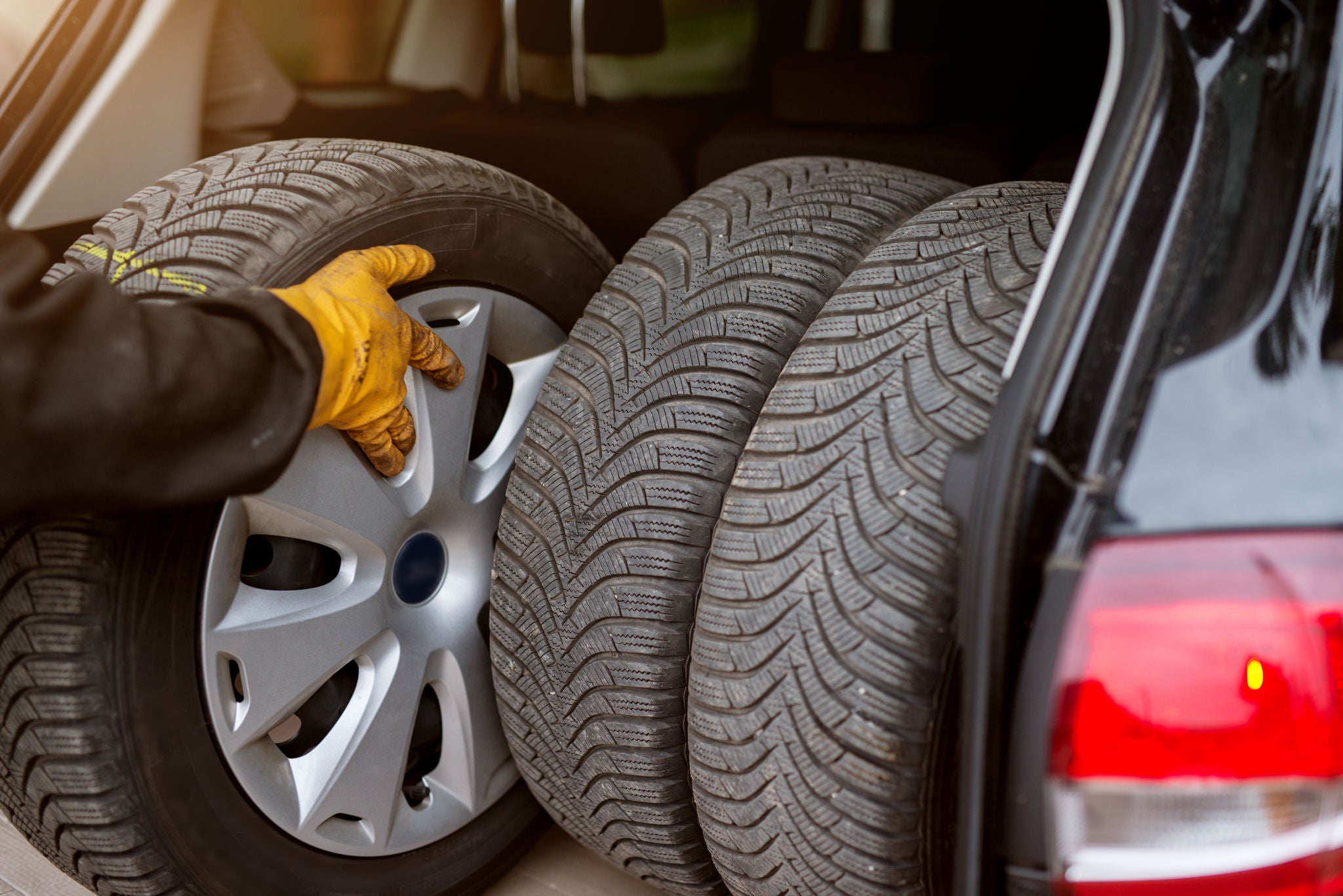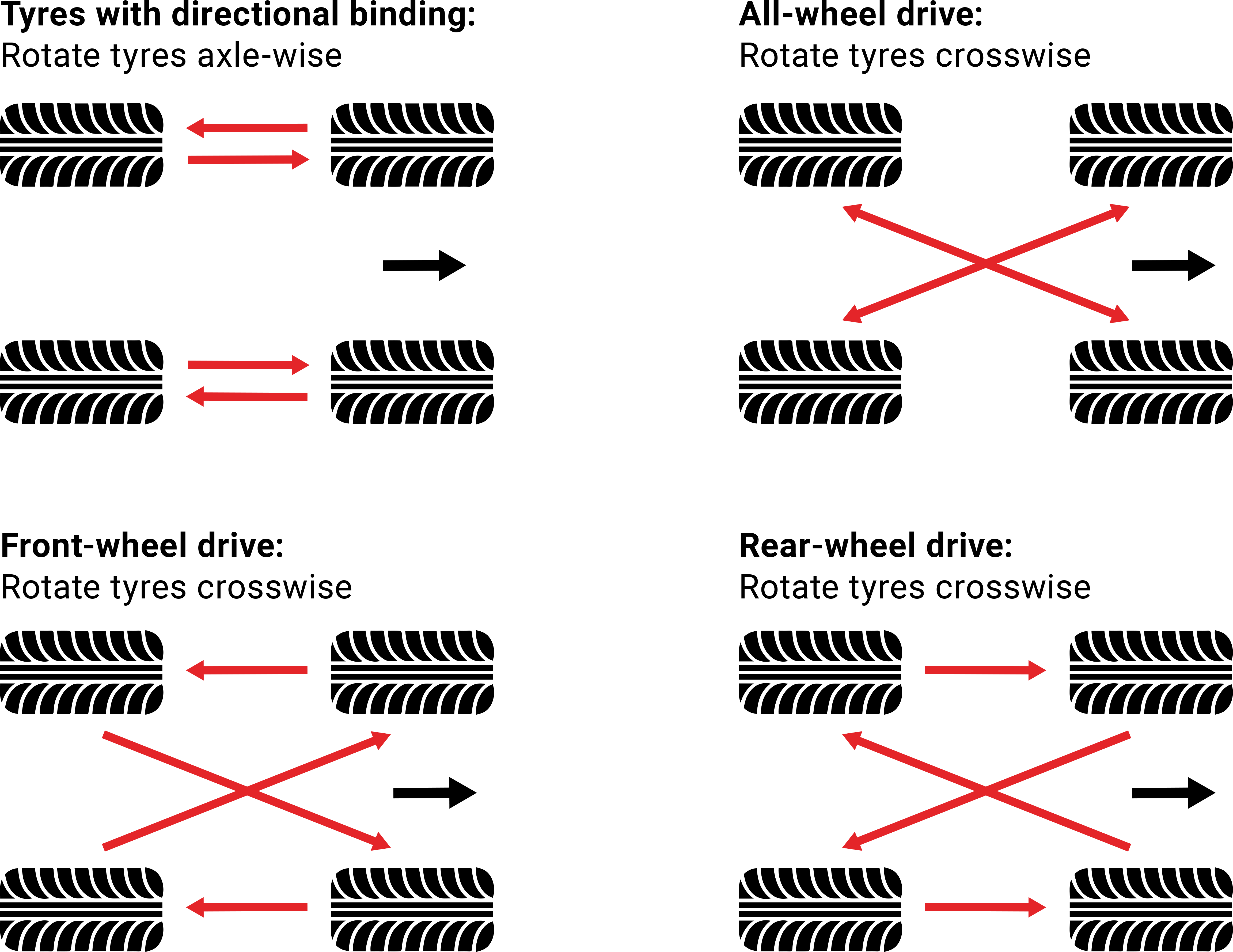
You won’t get far without it: Those who drive a car must remember to change the wheels at regular intervals. It’s up to you whether you decide to have the tyres changed at the garage or do it yourself. We explain what to pay attention to so that you can use your tyres for as long as possible: For example, whether you should put the new or better tyres at the front or rear. And why rotating tyres plays an important role in replacing them.
The essential thing: Keeping wear in check
Driving wears tyres out to a varying degree in the different axle positions. In addition to the drive type of the vehicle, driving style also has an impact on the degree of wear. Long journeys at high speeds wear out tyres faster. One-sided wear is also possible, for example due to an altered tyre track. It can even be displaced by small bumps against the curb. You should prick up your ears when you notice an increasing rolling sound when driving on a smooth road. This means that there is already significant wear.

Generally speaking, the tyres on the driving axle are subject to the most stress: In vehicles with a front-wheel drive, it is the front tyres. In contrast, the tyres on the rear axle wear out quicker in vehicles with a rear-wheel drive. In addition to the driving axle, the steering force also plays a role and has an effect on the tyres. The front tyres of front-wheel drives are subject to twice the amount of stress.
Tips
- Explaining the limits: What causes wear?
Tarmac has a rough surface which provides good traction. Wear is caused by the friction between the tyres and tarmac. - Tyre change, wheel replacement – what is the correct term?
Careful, this can lead to misunderstandings. The term tyre change is commonly used when a wheel change is actually being referred to. A wheel change is something you can do yourself and often describes the seasonal change. An actual tyre change is where the rim is replaced along with the tyres by specialists. In this case, the tyres also need to be mounted onto the rims.
Changing wheels: How to effectively prevent wear
To counteract uneven wear and to ensure that you can use your tyres for as long as possible, you should regularly change the wheels and swap the front and back tyres. As a general rule, this can be done every six months, i.e. in spring when swapping summer tyres with winter ones and in autumn when swapping winter tyres with summer ones. We explain when you should replace your tyres.
Make sure that you rotate the positions of the tyres when you replace them. You can do this while changing the winter tyres, for example. Rotate the positions of the car tyres at the front and back when you do this. Our tip: Before changing, write the previous wheel position on the tyre in chalk. This way you'll know the previous position of the tyres and where they should be moved to in the next seasonal change.
Wheel change according to plan: This is how it works
If you want to use the tyres for as long as possible, it is best to follow a schedule for changing them. Switch the wheels mounted on the driving axle over to the non-driven axle. The wheels of the non-driven axis move in a straight line onto the driving axle.
For all-wheel drive vehicles, change the tyres crosswise.
Note: The direction is predetermined for some tyres, for example for many winter tyres. While switching the tyres crosswise as described, only change the tyres connected to the direction of travel in a straight line from front to back and vice versa.
These graphics illustrate the different changing schemes once more.

If you replace old tyres with new tyres and this does not apply to the whole set, there comes the question: Do you fit the new tyres at the front or back? Regardless of the drive type, we recommend not fitting the better tyres at the front, but always fitting them at the back. The reason is simple: The rear axle ensures the tracking stability of a vehicle.
Changing the tyres: Our three tips
- Remember to rotate the tyres when changing them.
- The better and new tyres go to the back, not to the front.
- Take note of the direction of the tyres.
Related Topics
-
 2023/03/31For your safety, comfort and the longevity of your tyres, it’s important that you check your tyre pressures regularly.Tyre pressureRead more
2023/03/31For your safety, comfort and the longevity of your tyres, it’s important that you check your tyre pressures regularly.Tyre pressureRead more -
 2023/03/31There are several reasons why you might need to change your tyres. Maybe it’s that time of year when you need to swap from winter tyres to summer tyres – or the other way round.Replacing tyresRead more
2023/03/31There are several reasons why you might need to change your tyres. Maybe it’s that time of year when you need to swap from winter tyres to summer tyres – or the other way round.Replacing tyresRead more